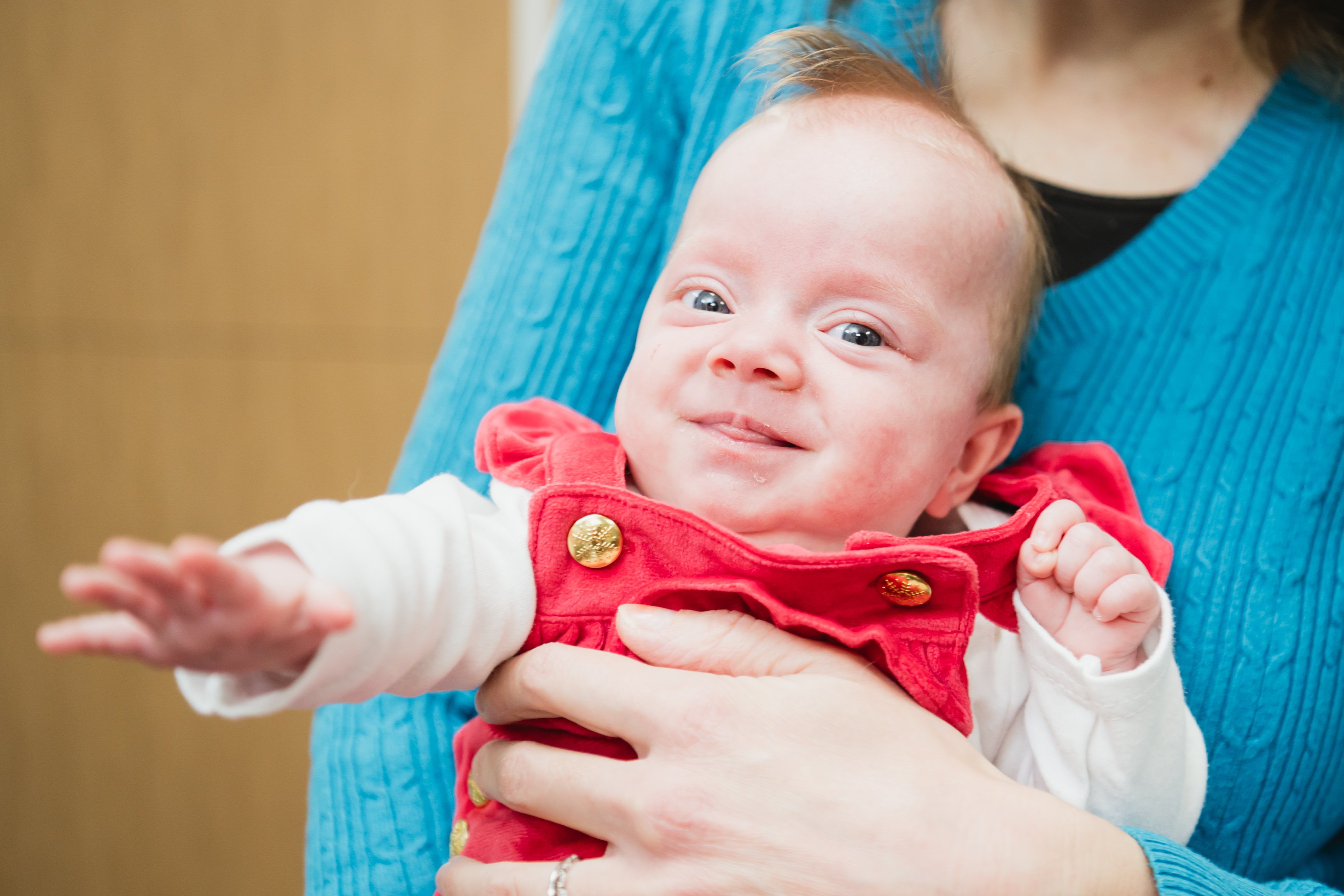77 days in the NICU
Baby Elisabeth was born at 29 weeks at Hartford Hospital, weighing three pounds and one ounce. Members of her Connecticut Children’s neonatal care team were in the room. They’d been preparing for this moment, both in the labor and delivery room and down the hall in Connecticut Children’s Level IV NICU. They intubated Elisabeth to help her breathe, and inserted a tube into her chest to replace the shunt, keeping the deflated cyst from filling up with air and causing the same dangerous mass effect.
To survive on her own, Elisabeth needed to have that cyst removed entirely, along with part of the lung it was attached to. First, though, she needed to get bigger and stronger. For about six weeks, Anna and Jared traded off sitting beside her incubator in the NICU with being at home for their other two children, ages 1 and 3. It was heart-wrenching to only be in one place at a time, but their family and friends rallied around them. So did Elisabeth’s care team.
“All the nurses at the NICU were wonderful. They kept sending us pictures of Elisabeth, and did really cute things that showed that they cared about her. That they cared about us, too,” says Anna.
Finally, Elisabeth was strong enough for her second surgery with Dr. Crombleholme — who, beyond fetal surgery, is a board-certified pediatric surgeon. Over a few hours, the team successfully removed the left lower lobe containing the CPAM.
It was the moment everyone had been working toward. After the procedure, Elisabeth was able to breathe on her own. She started eating more. She grew healthier and healthier. And then, after 77 days in the NICU, she got to go home.
Her sister, Lydia, and brother, Silas, were waiting to shower her with affection. Thoroughly.
“They love her. Sometimes, they love her half to death. I’m like, ‘Step back!’” says Anna, laughing.









